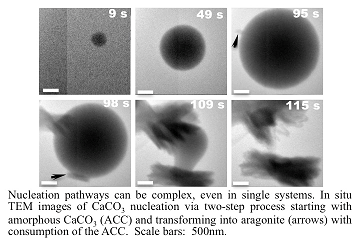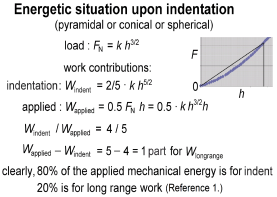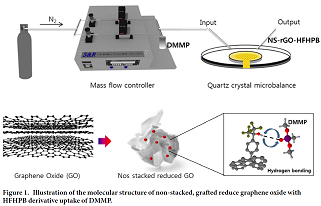Day 1 :
Keynote Forum
Jim De Yoreo
University of Washington, USA
Keynote: Investigating materials formation with liquid-phase TEM
Time : 08:25-08:50

Biography:
Jim De Yoreo is a Chief Scientist for Materials Science at Pacific Northwest National Laboratory (PNNL) and Affiliate Professor of Materials Science and Engineering at University of Washington. He completed his PhD in Physics at Cornell University in 1985. Following Post-doctoral work at Princeton University, he became a Staff Member at Lawrence Livermore National Laboratory, where he held numerous positions. He joined Lawrence Berkeley National Laboratory in 2007, serving as Interim Director of the Molecular Foundry before moving to PNNL in 2012. His research focuses on “Interactions, assembly and crystallization in inorganic, bio-molecular and bio-mineral systems”. He has authored over 220 publications and is a recipient of the MRS David Turnbull Lectureship.
Abstract:
Nucleation is the seminal process in the formation of ordered structures ranging from simple inorganic crystals to macromolecular matrices. Observations over the past 15 years have revealed a rich set of hierarchical pathways involving higher-order species ranging from multi-ion clusters to dense liquid droplets, as well as transient crystalline or amorphous phases. These non-classical pathways are diverse, in contrast to those of classical models that consider only addition of monomeric chemical species. Despite their complexity, a holistic framework for understanding particle-based pathways both during the nucleation and growth phases that extends classical concepts emerges when the coupled effects of complexity in free energy landscapes and the impact of dynamical factors governing particle formation and interaction are considered. Here, I describe that framework and use of a series of in situ TEM studies on inorganic and macromolecular systems to illustrate the evolution in nucleation and growth processes as these complexities and dynamical factors come into play. The introduction of either size-dependent phase stability associated with the high surface-to-volume ratios of nanoparticles, or high driving force coupled with the existence of metastable polymorphs leads to true two-step pathways characterized by the initial appearance of bulk precursor phases. Creation of micro-states, which represent local minima in free energy stabilized by configurational factors can also lead to hierarchical pathways, but the intermediates are transient states not present in the bulk phase diagram. In either of these cases, reduction in molecular mobility, either through reduced temperature or introduction of ion-binding macromolecules, can freeze non-equilibrium states into place for dynamical reasons. However, even when energy landscapes are smooth, high driving force creates dynamic factors that lead to hierarchical pathways through post-nucleation interaction and assembly of nanoparticles. Many of these processes can occur concurrently or sequentially in a single system.

Recent Publications
- De Yoreo JJ, Sommerdijk N.A.J.M (2016) Investigating processes of materials formation via liquid phase and cryogenic TEM. Nature Mater. Reviews 1: 16035.
- De Yoreo JJ, Gilbert PUPA, Sommerdijk NAJM, Penn RL, Whitelam, S et al., (2015) Crystallization by Particle Attachment in Synthetic, Biogenic, and Geologic Environments. Science 349: 498.
- Smeets PJM, Cho K-R, Kempen RGE, Sommerdijk NAJM, De Yoreo JJ, (2015) Calcium carbonate nucleation driven by ion binding in a biomimetic matrix revealed by in situ electron microscopy. Nature Mat. 14: 394-399.
- Nielsen MH, Aloni S, and De Yoreo JJ (2014) In situ TEM imaging of CaCO3 nucleation reveals coexistence of direct and indirect pathways. Science 345: 1158-1162.
5. Li D, Nielsen MH, Lee JR, Frandsen C, Banfield J, De Yoreo JJ, (2012) Direction-specific interactions control crystal growth by oriented attachment. Science 336: 1014-1018.
Keynote Forum
Gerd Kaupp
University of Oldenburg, Germany
Keynote: ISO-standards 14577 violate the first energy law: Can we further live with that?
Time : 08:50-09:15

Biography:
Gerd Kaupp studied Chemistry at University of Würzburg, Germany and completed his Post-doctoral studies at Albert Ludwigs University of Freiburg, where he appointed as an Associate Professor. He was appointed as Full Professor at University of Oldenburg in 1982. He guided a successful research group with various projects and cooperation with numerous industries and worldwide academic research groups. He served as Guest Professor for three international universities. He is now a retired member at University of Oldenburg. He has expertise in “Chemical kinetics, laser photochemistry, waste-free benign syntheses and productions, solid-state chemistry, reactive milling, mechanochemistry, atomic force microscopy AFM, scanning near-field optical microscopy SNOM, nano-scratching, nano-indentation, standardization in nano-mechanics and bionics”.
Abstract:
The precise mathematical deduction from 2013 of the indentation work contribution that is lost for the penetration reveals that all the standards under ISO-14577 violate the first energy law. This concerns the definition of ISO-hardness and reduced modulus and also deduced further mechanical parameters. And also the recently published physical foundation of the experimentally validated (since 2003 by the author) exponent 3/2 on the depth h for pyramidal indentations, creates dilemma for industry and security agencies, while ISO still dictates exponent two in relation to the applied normal force FN, as in Sneddon-citing textbooks. They have to obey ISO standards with legal character, even though physics tells differently. Even NIST (US member of ISO) published six new mechanical parameters in a tutorial that continues distributing false physics using exponent two and energy-law violation. We must thus urgently try to change that situation, because falsely calculated mechanical properties severely harm all public in daily life, in medicine (implants), and techniques. Material's compatibilities (including solders) and mechanical stress are ubiquitous, to name a few. Material's failures have been claimed as fatigue of materials, rather than calculations against physics and violating the energy-law. Errors are also with finite element simulations always resulting with exponent two, not noticing phase transitions with their onset and energy, nor surface effects. These are only recognized when applying exponent 3/2, but not by polynomial curve fittings, or best exponent iterations. Almost all mechanical parameters require re-deduction on the basis of the correct exponent. ISO-hardness H and ISO-modulus Er are triply flawed: Violating energy law, false exponent and often unconscious characterization after phase transitions. All materials require genuine and reliable physical characterization! Thus, physical H, Er and other parameters (adhesion energy, etc.) must be deduced. This will be addressed upon, and unexpected applications will be presented.

Recent Publications
- Kaupp G, (2013) Penetration resistance: a new approach to the energetics of indentations. Scanning 35: 392-401.
- Kaupp G (2013) Penetration Resistance and Penetrability in Pyramidal (Nano)Indentations. Scanning 35: 88-111
- Kaupp G (2014)Activation energy of the low-load NaCl transition from nanoindentation loading curves, Scanning 36: 582-589. Kaupp.G (2016).
- Kaupp G (2016) The physical foundation of FN = k h^3/2 for conical/pyramidal indentation loading curves. Scanning 38: 177-179; Open Access.
- Kaupp G (2006) Dilemma zwischen ISO und Physik: Nanotechnologie deckt auf. Nanobay, 3. May 2016.
- Kaupp G, Naimi-Jamal MR (2013) Penetration resistance and penetrability in pyramidal (nano)indentations, Scanning 35, 88-111.
- Kaupp G, Naimi-Jamal MR (2011) Universal penetration resistance and penetratability from pyramidal nanoindentations. Proceedings of the International Indentation Workshop 4 IIW4 in Seoul, Korea, on July 3rd – 8th, 2011
- Kaupp G, Naimi-Jamal MR (2010), The exponent 3/2 at pyramidal nanoindentations, SCANNING 32: 265-281.
- Naimi-Jamal MR, Kaupp G (2005) Quantitative evaluation of nanoindents: do we need more reliable mechanical parameters for the characterization of materials? Z. Metallkd. 96:1226-1236.
- Kaupp G, Schmeyers J, Hangen UD (2002) Anisotropic molecular movements in organic crystals by mechanical stress without chemical reaction. J.Phys.Org.Chem 15: 307-315.
Keynote Forum
Xiang Zhang
University of Cambridge, UK
Keynote: New concept of bioresorbable polymer-based ceramic hybrids for cardiovascular stent applications
Time : 09:15-09:40

Biography:
Xiang Zhang is a Royal Society Industry Fellow at University of Cambridge. He has over 34 years combined academia (17 years) and industrial (17 years) experience in Advanced Materials Science and Technology. He is an expert in Polymer and Polymeric Hybrid Materials Science and Technology. He is Head of Lucideon Cambridge School of Advanced Materials. He is an author of three books: “Inorganic Biomaterials; Inorganic Controlled Release Technology and Science” and; “Principes of Biodegradable” and “Bioresorbable Medical Polymers - Materials and Properties”. He completed his PhD and Post-doctoral research at Cranfield University where he studied “Materials physics, nano/micro-mechanics and nano/micro-fracture mechanics of polymeric hybrid (organic and inorganic) materials”.
Abstract:
This presentation will introduce new theories and industry practice for design and development of polymer-based ceramic hybrids. The evolution from pure polymer-based medical devices to polymer-based ceramic hybrids is to meet unmet market needs for better clinical performance over existing systems. There are many factors that can affect medical implant performance and, historically, most of them have been well studied, such as bioactivities and biocompatibility. In this presentation, new concept will be mainly addressing issue surround biomechanics, bio-fracture mechanics and bio-functionality for design and development of new hybrid biomaterials for implant applications. It will report the principles on formulations for two types of the new systems. One family is of biodegradable and bioresorbable hybrids and 2nd is of non-biodegradable hybrids. It will be followed by design and development of medical devices in view of industry practice with clinical performance considerations of medical devices. The main topics covered in the presentation include: New concepts and synthetic pathway of polymer-based ceramic hybrids; nano/micro mechanics and nano/micro fracture mechanics; industry practice – two case studies will be used to demonstrate on how to design and develop polymer-based ceramic hybrid biomaterials and relevant processing technology for the applications of medical implants. Cardiovascular stent, as an example is traditionally made of metal such as bare metal stents (BMS) or with drug coatings, i.e. drug eluting stents (DES). There are, however, clinical complications associated with these technologies, such as, early stage restenosis, very late thrombosis and risk associated with revision surgery. In light of these challenges research focus has turned to the development of bioresorbable vascular scaffold (BVS) technologies. We have developed new bioresorbable polymer-based ceramic stent that has been reinforced resorbable therapeutic cardiovascular stent to address the known limitations of cardiovascular technologies. We have developed a bioresorbable stent with intrinsic toughness for handling and deployment via balloon angioplasty, radial strength, controlled drug-release technology to suppress restenosis and surface functionalization to promote endothelialization to reduce risk of thrombosis. We present the novel synthetic polymer-ceramic composites developed as candidate stent-core materials, both their preparation and the characterization of their mechanical behavior, in vitro degradation will be presented.
Recent Publications
- Science and Principles of Biodegradable and Bioresorbable Medical Polymers - Materials and Properties, 2016 by Elsevier
- Inorganic Controlled Release Technology, 1st Edition - Materials and Concepts for Advanced Drug Formulation, 2015 pub. by Elsevier
- Inorganic Biomaterials: Structure, Properties and Applications, 2014 pub. By Smithers Rapra
- Polymer, 41 (2000) 3797-3807, X C Zhang, M F Butler and R E Cameron, “The Ductile – Brittle Transition of Irradiated Isotactic Polypropylene Studies Using Small Angle X-ray Scattering and Tensile Deformation”
- Advanced Materials, 12 December 2015, Yongjiu Lei, Ruize Sun, Xiangcheng Zhang, Xinjian Feng, Lei Jiang, “Oxygen-Rich Enzyme Biosensor Based on Superhydrophobic Electrode”
- Polymer, 41 (2000) 3797-3807, X C Zhang, M F Butler and R E Cameron. “The Ductile – Brittle Transition of Irradiated Isotactic Polypropylene Studies Using Small Angle X-ray Scattering and Tensile Deformation”
Keynote Forum
Hyoyoung Lee
Sungkyunkwan University, South Korea
Keynote: Graphene flake and graphene quantum dot-receptor sensor for detecting nerve agents
Time : 09:40-10:05

Biography:
Hyoyoung Lee completed his PhD in Department of Chemistry at University of Mississippi, USA in 1997. He held Post-doctoral Associate position at North Carolina State University, USA, for two years. He worked at Electronics and Telecommunications Research Institute from 2000 to 2009 as Team Leader. He moved to Sungkyunkwan University and has served as a Full Professor at Department of Chemistry, lecturing organic chemistry. He served as a Director of National Creative Research Initiatives, Center of Smart Molecular Memory from 2006 to February, 2015. Currently, he is serving as an Associate Director of Centre for Integrated Nanostructure Physics, Institute of Basic Science from November 2015. His current research area includes “Organic semiconducting materials and devices including molecular/organic memory, OLED, OTFT, sensors, energy harvesting and storage, graphene oxide, reduced graphene oxide, and 2D transition metal chalcogenide”. He has written more than 120 journal articles with top-tier journals.
Abstract:
A novel gas sensor consisting of porous, non-stacked reduced graphene oxide (NSrGO)-heaxfluorohydoroxypropanyl benzene (HFHPB) nanosheets was successfully fabricated, allowing the detection of dimethyl methyl phosphonate (DMMP), similar to sarin toxic gas. The HFHPB group was chemically grafted to the NSrGO via a diazotization reaction to produce NSrGO-HFHPB. The NSrGO-HFHPB 3D film has a mesoporous structure with a large pore volume and high surface area that can sensitively detect DMMP and concurrently selectively signal the DMMP through the chemically-attached HFHPB. The DMMP uptake of the mesoporous NSrGO-HFHPB was 240.03 Hz, 12 times greater than that of rGO-HFHPB (20.14 Hz). In addition, the response rate of NSrGO-HFHPB was faster than that of rGO-HFHPB, an approximately 3 times more rapid recovery due to the mesoporous structure of the NSrGO-HFHPB. In addition we like to present a band gap tuning of environmental-friendly graphene quantum dot (GQD) for a photoluminescence (PL) sensor. With the help of the electron withdrawing HFHPB group, the energy band gap of the HFHPB-GQD was widened and its PL decay life time decreased. As designed, after addition of dimethyl methylphosphonate (DMMP), the PL intensity of HFHPB-GQD sensor sharply increased up to approximately 200% through a hydrogen bond with DMMP. The fast response and short recovery time was proven by quartz crystal microbalance (QCM) analysis. This HFHPB-GQD sensor shows highly sensitivity to DMMP in comparison with GQD sensor without HFHPB and graphene. In addition, the HFHPB-GQD sensor showed high selectivity only to the phosphonate functional group among many other analytes and also stable enough for real device applications. Thus, the tuning of the band gap of the photo-luminescent GQDs may open up new promising strategies for the molecular detection of target substrates.

Recent Publications
1. Keunsik Lee, Hanleem Lee, Yonghun Shin, Yeoheung Yoon, Doyoung Kim and Hyoyoung Lee* (2016) Tunable Sub-nanopore of Graphene Flake Interlayers with Conductive Molecular Linkers for Supercapacitors. ACS Nano 10:6799−6807.
2. Hee Min Hwang, Eunhee Hwang, Doyoung Kim & Hyoyoung Lee* (2016) Mesoporous Non-stacked Graphene-receptor Sensor for Detecting Nerve Agents. Scientific reports 6:33299.
3. Yonghun Shin, Junghyun Lee, Junghee Yang, Jintaek Park, Keunsik Lee, Sungjin Kim, Younghun Park and Hyoyoung Lee* (2014) Mass Production of Graphene Quantum Dots by One- Pot Synthesis Directly from Graphite in High Yield. Small 10:866–870.
4. Keunsik Lee, Hanleem Lee, Yonghun Shin, Yeoheung Yoon, Doyoung Kim and Hyoyoung Lee* (2016) Highly Transparent and Flexible Supercapacitors Using Graphene-Graphene Quantum Dots Chelate. Nano Energy 26:746-754.
5. Eunhee Hwang, Hee Min Hwang, Yonghun Shin, Yeoheung Yoon, Hanleem Lee, Junghee Yang, Sora Bak and Hyoyoung Lee* (2016) Chemically modulated graphene quantum dot for tuning the photoluminescence as novel sensory probe. Scientific Reports 6: 39448.
